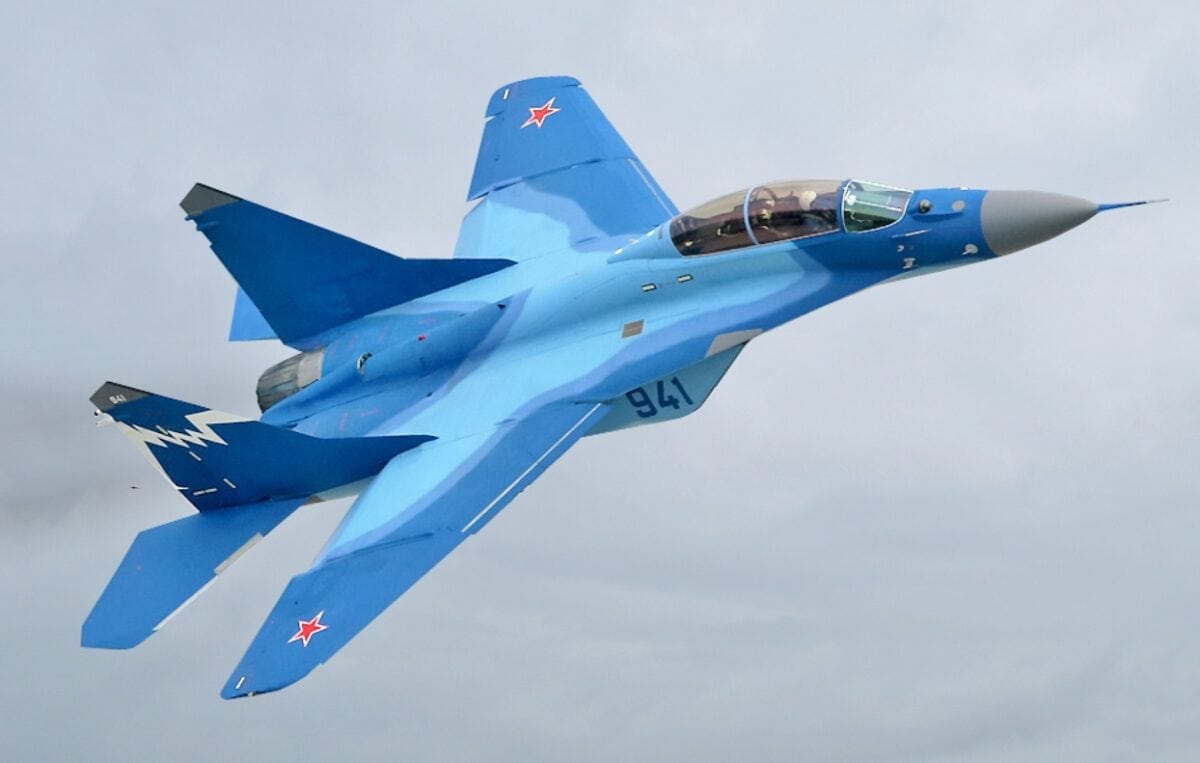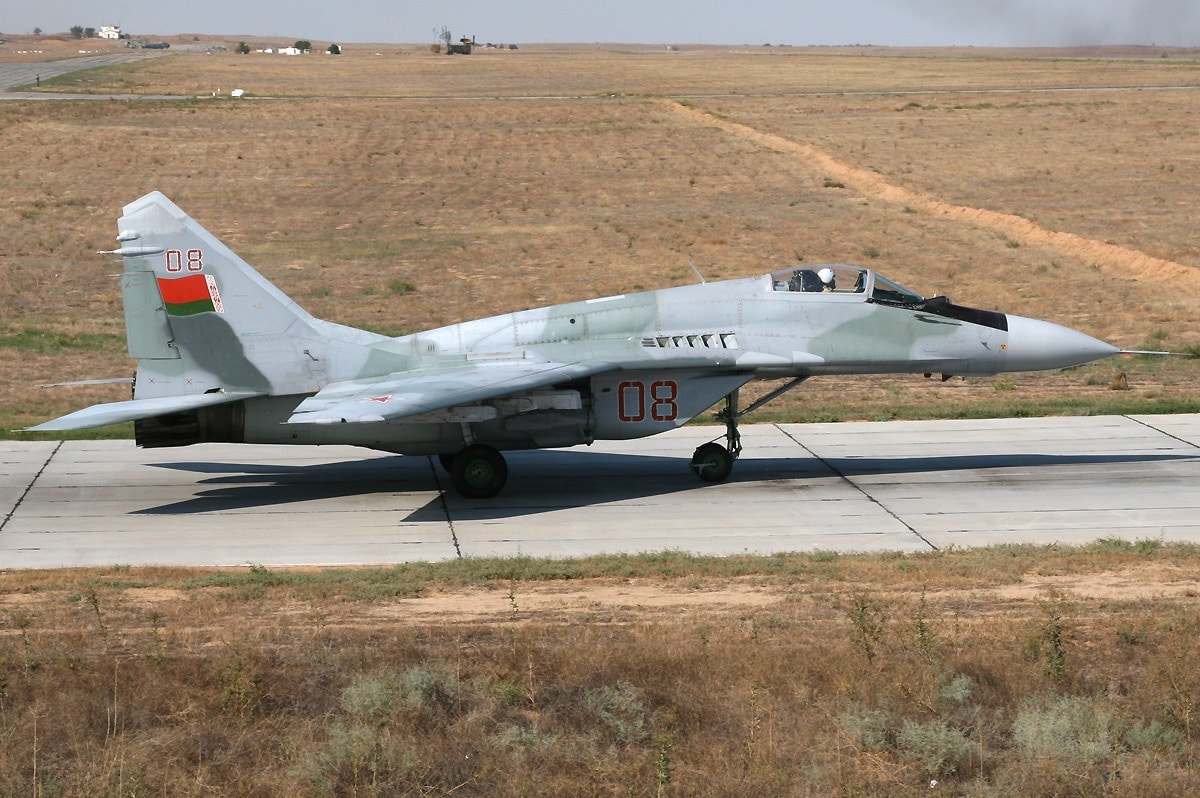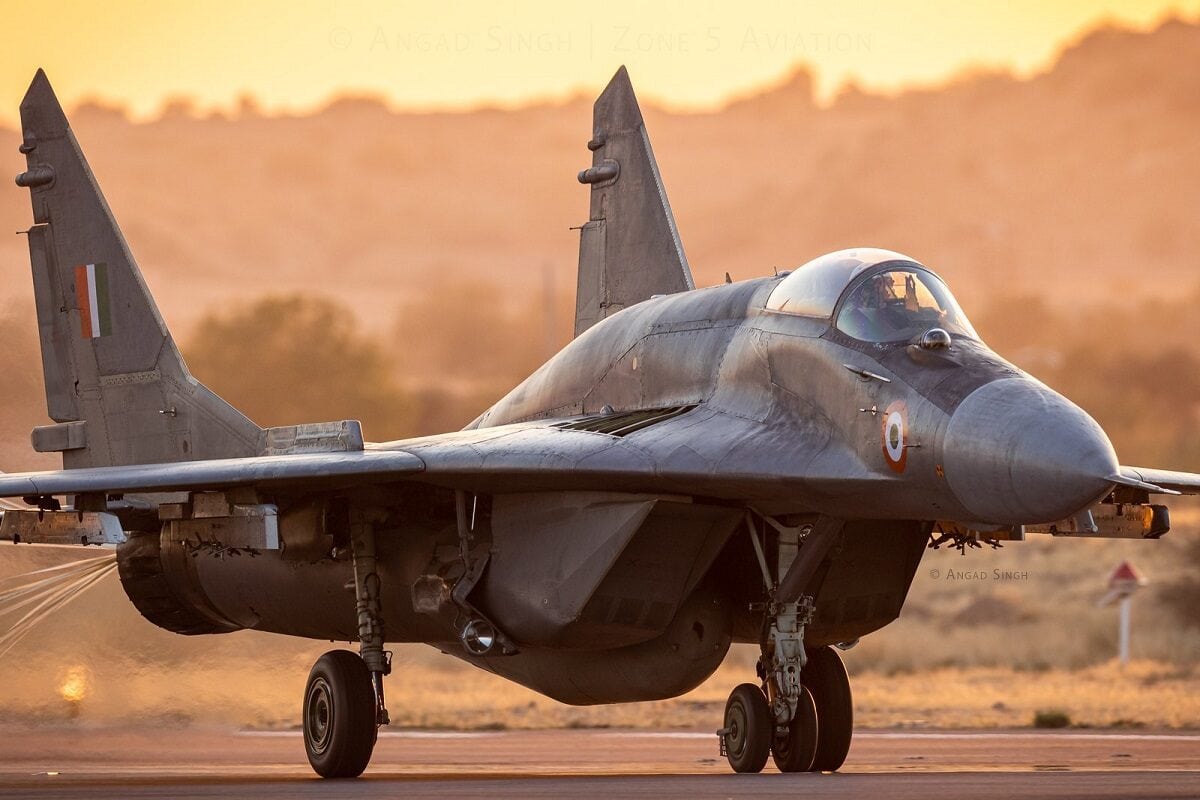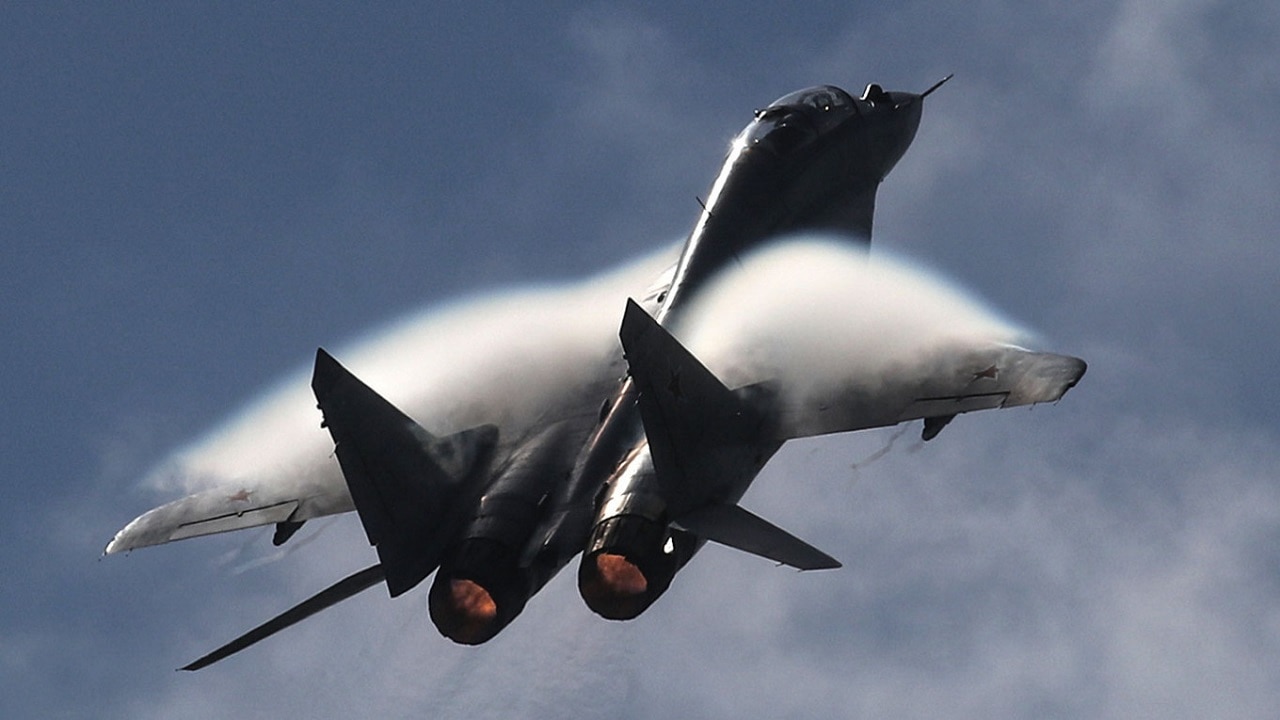What made the MiG-29 so special and why was Ukraine so interested in acquiring them? Russia defense expert Wesley Culp takes those questions on: Despite its origins in the final years of the Cold War, Russia’s modern MiG-29 multirole fighter aircraft variants are some of the most up-to-date in Russian service today. The Cold War-era fame of the Soviet Union’s MiG-29 has seen something of a second wind since Russia’s invasion of Ukraine in February, as Fulcrums (as MiG-29s are referred to under their NATO designation) have featured prominently in the air campaigns of both sides, as well as in the enduring saga of Western aid to Ukraine.
Development and Evaluation of the MiG-29
Development of the MiG-29 began in the 1970s, which saw the aircraft’s first flight in November 1977 and entry into service in 1982 as the Soviet Union’s response to the development of the US’ F-16 Fighting Falcon fighter.
Much of what we in the United States and the West know about the Fulcrum was confirmed during the collapse of the Soviet Union, when engineers and researchers in the United States suddenly had the chance to acquire examples of the MiG directly, and the Federal German Luftwaffe inherited several Fulcrums from the now-defunct East German Air Force.
Following the collapse of the Soviet Union, Moldova found itself in possession of 33 examples of the Fulcrum (many of which were the most modern variant in service at that time) which it could not maintain, which led Chisinau to attempt to sell off the models to the highest bidder. Sensing an opportunity to evaluate the aircraft and to deprive Iran from getting its hands on new Fulcrums (as Iran had expressed considerable interest in them), the United States swept in and purchased the Moldovan Fulcrums.
Evaluation of the American and German-owned MiG-29s revealed that they were in many ways true competitors to NATO aircraft of a similar age and role in terms of turn rate, speed, and short-range missile armament for engagements within visual range.
However, it was quickly revealed that Western fighters had advantages in beyond-visual-range engagements as well as in providing battlefield information to the pilot, a deficiency which precluded German Fulcrums from combat deployments after reunification, despite being the only East German combat aircraft that the united German Air Force held on to.
How Modern MiG-29s Stack Up
First flown in 1998 and having begun serial production in 2004, the MiG-29SMT is the most modern version of the MiG-29 in service with Russia’s Aerospace Forces today.
Propelled by two modernized RD-33 series-3 turbofan engines, this version of the Fulcrum has a max speed of Mach 2.25 and a service ceiling 17,500 meters.
In addition to its 30mm Gsh-301 cannon, the Fulcrum is also outfitted with seven hardpoints which are capable of carrying medium- and short-range air-to-air missiles, guided bombs, air-to-surface missiles, anti-radar missiles, and anti-ship missiles. Russia’s Naval Aviation operates its own version of the Fulcrum known as the MiG-29K, which is designed for carrier operations.
The MiG-29 Fulcrum in Ukraine
The MiG-29 has featured prominently in news about Ukraine, especially as a potential element of Western military aid to Ukraine against Russia’s invasion.
In the first weeks of the Russian invasion, Ukraine lobbied for the United States to facilitate the transfer of Polish, Slovak, and Bulgarian Fulcrums to compensate for Ukrainian Air Force losses and to narrow the advantage enjoyed by Russia in operational aircraft in use over Ukraine.
However, despite reported Polish support for such a plan (which would hypothetically involve backfilling Polish fighter aircraft stocks with U.S.-made equivalents such as the F-16), U.S. policymakers demurred on the proposal, opting instead to provide the Ukrainian Air Force with spare parts to help keep as many existing Ukrainian Fulcrums operational as possible.
While other Russian fighters such as the Su-35 appear to have superseded the MiG-29 on the Russian side of Moscow’s invasion, Ukrainian MiG-29s have seen some success against Russian jets thus far in the conflict, despite suffering some losses in the process.

Image of MiG-29. Creative Commons Image.

Image: Creative Commons.

Image: Creative Commons.
While the Soviet-designed MiG-29 plays a varying role in the air forces it currently serves, it is unlikely that Russia will retire it soon. As a result, the Fulcrum of Cold War fame will likely remain a topic of interest in the Russian and Ukrainian Air Forces for years to come.
Wesley Culp is a Research Fellow at the Center for the Study of the Presidency and Congress. He regularly writes on Russian and Eurasian leadership and national security topics and has been published in The Hill as well as in the Diplomatic Courier. He can be found on Twitter @WesleyJCulp.

